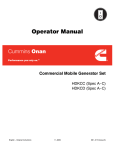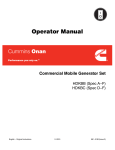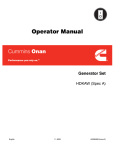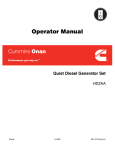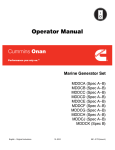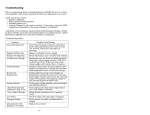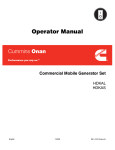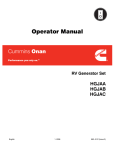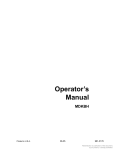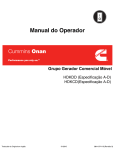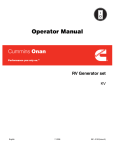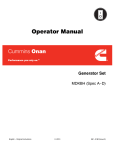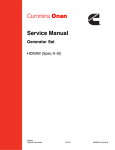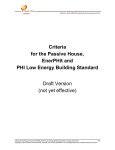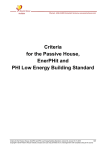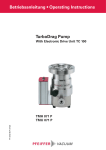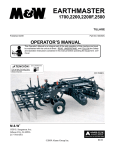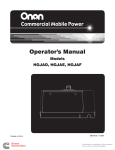Download Operator Manual - Electric Generators Direct
Transcript
Operator Manual RV Generator Set HDKCA HDKCB English 1−2009 981−0173 (Issue 5) California Proposition 65 Warning Diesel engine exhaust and some of its constituents are known to the State of California to cause cancer, birth defects, and other reproductive harm. Table of Contents SECTION PAGE SAFETY PRECAUTIONS . . . . . . . . . . . . . . . . . . . . . . . . . . . . . . . . . . . . . . . . . . . . . . . . . . . . . iii 1. INTRODUCTION . . . . . . . . . . . . . . . . . . . . . . . . . . . . . . . . . . . . . . . . . . . . . . . . . . . . . . . . . . 1-1 About this Manual . . . . . . . . . . . . . . . . . . . . . . . . . . . . . . . . . . . . . . . . . . . . . . . . . . . . . 1-1 Nameplate . . . . . . . . . . . . . . . . . . . . . . . . . . . . . . . . . . . . . . . . . . . . . . . . . . . . . . . . . . . 1-1 How to Obtain Service . . . . . . . . . . . . . . . . . . . . . . . . . . . . . . . . . . . . . . . . . . . . . . . . . 1-2 Engine Emissions Compliance . . . . . . . . . . . . . . . . . . . . . . . . . . . . . . . . . . . . . . . . . . 1-3 Typical Genset . . . . . . . . . . . . . . . . . . . . . . . . . . . . . . . . . . . . . . . . . . . . . . . . . . . . . . . . 1-4 2. OPERATION . . . . . . . . . . . . . . . . . . . . . . . . . . . . . . . . . . . . . . . . . . . . . . . . . . . . . . . . . . . . . . 2-1 Fuel Recommendations . . . . . . . . . . . . . . . . . . . . . . . . . . . . . . . . . . . . . . . . . . . . . . . . 2-1 Engine Oil Recommendations . . . . . . . . . . . . . . . . . . . . . . . . . . . . . . . . . . . . . . . . . . 2-1 Recommended Coolant . . . . . . . . . . . . . . . . . . . . . . . . . . . . . . . . . . . . . . . . . . . . . . . . 2-2 Starting Batteries . . . . . . . . . . . . . . . . . . . . . . . . . . . . . . . . . . . . . . . . . . . . . . . . . . . . . 2-2 Control Panel . . . . . . . . . . . . . . . . . . . . . . . . . . . . . . . . . . . . . . . . . . . . . . . . . . . . . . . . . 2-2 Remote Control Panel . . . . . . . . . . . . . . . . . . . . . . . . . . . . . . . . . . . . . . . . . . . . . . . . . 2-2 Pre-Start Checks . . . . . . . . . . . . . . . . . . . . . . . . . . . . . . . . . . . . . . . . . . . . . . . . . . . . . . 2-4 Priming the Fuel System . . . . . . . . . . . . . . . . . . . . . . . . . . . . . . . . . . . . . . . . . . . . . . . 2-4 Manual Starting . . . . . . . . . . . . . . . . . . . . . . . . . . . . . . . . . . . . . . . . . . . . . . . . . . . . . . . 2-4 Manual Stopping . . . . . . . . . . . . . . . . . . . . . . . . . . . . . . . . . . . . . . . . . . . . . . . . . . . . . . 2-4 Automatic Starting and Stopping . . . . . . . . . . . . . . . . . . . . . . . . . . . . . . . . . . . . . . . . 2-5 Loading the Genset . . . . . . . . . . . . . . . . . . . . . . . . . . . . . . . . . . . . . . . . . . . . . . . . . . . 2-5 Resetting Circuit Breakers . . . . . . . . . . . . . . . . . . . . . . . . . . . . . . . . . . . . . . . . . . . . . . 2-6 Connecting to Utility Power . . . . . . . . . . . . . . . . . . . . . . . . . . . . . . . . . . . . . . . . . . . . . 2-6 Operating in Cold Weather . . . . . . . . . . . . . . . . . . . . . . . . . . . . . . . . . . . . . . . . . . . . . 2-6 Operating in Hot Weather . . . . . . . . . . . . . . . . . . . . . . . . . . . . . . . . . . . . . . . . . . . . . . 2-6 Operating at High Altitude . . . . . . . . . . . . . . . . . . . . . . . . . . . . . . . . . . . . . . . . . . . . . . 2-6 Operating in Dusty Environments . . . . . . . . . . . . . . . . . . . . . . . . . . . . . . . . . . . . . . . 2-6 Breaking In a New Engine . . . . . . . . . . . . . . . . . . . . . . . . . . . . . . . . . . . . . . . . . . . . . . 2-7 Exercising the Genset . . . . . . . . . . . . . . . . . . . . . . . . . . . . . . . . . . . . . . . . . . . . . . . . . 2-7 Storing the Genset . . . . . . . . . . . . . . . . . . . . . . . . . . . . . . . . . . . . . . . . . . . . . . . . . . . . 2-7 i 3. PERIODIC MAINTENANCE . . . . . . . . . . . . . . . . . . . . . . . . . . . . . . . . . . . . . . . . . . . . . . . . 3-1 General Inspection . . . . . . . . . . . . . . . . . . . . . . . . . . . . . . . . . . . . . . . . . . . . . . . . . . . . 3-2 Checking Engine Oil Level . . . . . . . . . . . . . . . . . . . . . . . . . . . . . . . . . . . . . . . . . . . . . 3-2 Changing Engine Oil and Oil Filter . . . . . . . . . . . . . . . . . . . . . . . . . . . . . . . . . . . . . . 3-3 Maintaining the Battery and Battery Connections . . . . . . . . . . . . . . . . . . . . . . . . . . 3-4 Replacing the Air Filter Element . . . . . . . . . . . . . . . . . . . . . . . . . . . . . . . . . . . . . . . . . 3-4 Cleaning the Spark Arrestor . . . . . . . . . . . . . . . . . . . . . . . . . . . . . . . . . . . . . . . . . . . . 3-5 Replacing the Fuel Filter . . . . . . . . . . . . . . . . . . . . . . . . . . . . . . . . . . . . . . . . . . . . . . . 3-6 Maintaining the Engine Cooling System . . . . . . . . . . . . . . . . . . . . . . . . . . . . . . . . . . 3-7 4. TROUBLESHOOTING . . . . . . . . . . . . . . . . . . . . . . . . . . . . . . . . . . . . . . . . . . . . . . . . . . . . . 4-1 Troubleshooting With Table 4-1 . . . . . . . . . . . . . . . . . . . . . . . . . . . . . . . . . . . . . . . . . 4-1 Fault Code Blinking . . . . . . . . . . . . . . . . . . . . . . . . . . . . . . . . . . . . . . . . . . . . . . . . . . . 4-1 Restoring Fault Code Blinking . . . . . . . . . . . . . . . . . . . . . . . . . . . . . . . . . . . . . . . . . . 4-1 5. SPECIFICATIONS . . . . . . . . . . . . . . . . . . . . . . . . . . . . . . . . . . . . . . . . . . . . . . . . . . . . . . . . . 5-1 6. MAINTENANCE RECORD . . . . . . . . . . . . . . . . . . . . . . . . . . . . . . . . . . . . . . . . . . . . . . . . . 6-1 ii SAFETY PRECAUTIONS • Engine cooling air must not be used for heating the vehicle. Thoroughly read the OPERATOR’S MANUAL before operating the genset. Safe operation and top performance can only be obtained when equipment is properly operated and maintained. GENERATOR VOLTAGE IS DEADLY • Disable the automatic genset starting feature (AGS) of an inverter-charger or other automatic starting device before servicing the genset to avoid electric shock from an unexpected start. The following symbols in this manual alert you to potential hazards to the operator, service person and equipment. • Generator electrical output connections must be made by a trained and experienced electrician in accordance with applicable codes. alerts you to an immediate hazard that will result in severe personal injury or death. DANGER • The genset must not be connected to shore power (utility). Back-feed to shore power can cause electrocution and damage to equipment. An approved switching device must be used to prevent interconnections. alerts you to a hazard or unsafe practice that can result in severe personal injury or death. WARNING CAUTION alerts you to a hazard or unsafe practice that can result in personal injury or equipment damage. • Use caution when working on live electrical equipment. Remove jewelry, make sure clothing and shoes are dry, stand on a dry wooden platform or rubber insulating mat and use tools with insulated handles. When equipped with an integral or add−on Automatic Generator Starting System (AGS) control, exhaust carbon monoxide (CO), electric shock, and moving parts hazards are possible due to unexpected starting. Turn off AGS whenever performing maintenance or service, when the vehicle is stored between uses, is awaiting service, or is parked in a garage or other confined area. DIESEL FUEL IS COMBUSTIBLE • Do not smoke or turn electrical switches ON or OFF where fuel fumes are present or in areas sharing ventilation with fuel tanks or equipment. Keep flames, sparks, pilot lights, arcproducing equipment and all other sources of ignition well away. ENGINE EXHAUST IS DEADLY • Fuel lines must be secured, free of leaks and separated or shielded from electrical wiring. • Inspect for exhaust leaks at every startup and after every eight hours of running. • Learn the symptoms of carbon monoxide poisoning in the genset Operator’s Manual. MOVING PARTS CAN CAUSE SEVERE PERSONAL INJURY OR DEATH • Never sleep in the vehicle while the genset is running unless the vehicle is equipped with a working carbon monoxide detector. • Disable the automatic genset starting feature (AGS) of an inverter-charger or other automatic starting device before servicing the genset to avoid unexpected starting. • Do not operate the genset when the vehicle is parked in a confined space, such as a garage. • Do not wear loose clothing or jewelry near moving parts such as PTO shafts, fans, belts and pulleys. • Disable the AGS feature of an inverter-charger or other automatic starting device before storing the vehicle or parking it in a garage or other confined space. • Keep hands away from moving parts. • Keep guards in place over fans, belts, pulleys, and other moving parts. • The exhaust system must be installed in accordance with the genset Installation Manual. iii BATTERY GAS IS EXPLOSIVE • Keep the genset and its compartment clean. Excess oil and oily rags can catch fire. Dirt and gear stowed in the compartment can restrict cooling air. • Wear safety glasses. • Do not smoke. • Make sure all fasteners are secure and torqued properly. • To reduce arcing when disconnecting or reconnecting battery cables, always disconnect the negative (−) battery cable first and reconnect it last. • Do not work on the genset when mentally or physically fatigued or after consuming alcohol or drugs. FLAMMABLE VAPOR CAN CAUSE A DIESEL ENGINE TO OVERSPEED • You must be trained and experienced to make adjustments while the genset is running—hot, moving or electrically live parts can cause severe personal injury or death. Flammable vapor can cause a diesel engine to overspeed and become difficult to stop, resulting in possible fire, explosion, severe personal injury and death. Do not operate a diesel-powered genset where a flammable vapor environment can be created by fuel spill, leak, etc. The owners and operators of the genset are solely responsible for operating the genset safely. • Used engine oil has been identified by some U. S. state and federal agencies as causing cancer or reproductive toxicity. Do not ingest, inhale, or contact used oil or its vapors. • Ethylene glycol, used as engine antifreeze, is toxic to humans and animals. Clean up spills and dispose of used engine coolant in accordance with local environmental regulations. GENERAL PRECAUTIONS • Keep children away from the genset. • Keep multi-class ABC fire extinguishers readily at hand. Class A fires involve ordinary combustible materials such as wood and cloth. Class B fires involve combustible and flammable liquids and gaseous fuels. Class C fires involve live electrical equipment. See NFPA No. 10 (Portable Fire Extinguishers) or equivalent—BS EN 3-7:2004. • Do not use evaporative starting fluids. They are highly explosive. • To prevent accidental or remote starting while working on the genset, disconnect the negative (−) battery cable at the battery. • Let the engine cool down before removing the coolant pressure cap or opening the coolant drain. Hot coolant under pressure can spray out and cause severe burns. • Genset installation and operation must comply with all applicable local, state and federal codes and regulations. Mobile-8 iv 1. Introduction ABOUT THIS MANUAL This is the Operator’s Manual for the generator sets (gensets) listed on the front cover. Read and carefully observe all of the instructions and precautions in this manual. Keep this manual and the genset Installation Manual with the other vehicle manuals. Operation, Periodic Maintenance and Troubleshooting provide the instructions necessary for operating the genset and maintaining top performance. The owner is responsible for performing maintenance in accordance with the PERIODIC MAINTENANCE SCHEDULE (p. 3-1). WARNING This genset is not a life support system. It can stop without warning. Children, persons with physical or mental limitations, and pets could suffer personal injury or death. A personal attendant, redundant power or alarm system must be used if genset operation is critical. WARNING Improper service or replacement of parts can lead to severe personal injury or death and to damage to equipment and property. Service personnel must be qualified to perform electrical and mechanical service. Unauthorized modifications or replacement of fuel, exhaust, air intake or speed control system components that affect engine emissions are prohibited by law in the State of California. NAMEPLATE Be ready to provide the genset model and serial numbers on the nameplate when contacting Onan for parts, service or information. Figure 1-1 illustrates the nameplate and its location. The gray boxes illustrate where to look for the model and serial numbers. FIGURE 1-1. TYPICAL NAMEPLATE MODEL NUMBER: ___________________________ Record these numbers in Figure 1-2 so that they are easy to find when needed. Each character in these numbers is significant. The last character of the model number is the specification letter, which is important for obtaining the right parts. Genuine Onan® replacement parts are recommended for best results. Refer to the genset Parts Catalog. SERIAL NUMBER: ___________________________ FIGURE 1-2. RECORD NUMBERS HERE 1-1 HOW TO OBTAIN SERVICE RECREATIONAL VEHICLES − EQUIPMENT, PARTS AND SERVICE. When you call for service, parts, or product literature (such as the Service Manual or Parts Catalog) for your genset, contact the nearest authorized Cummins Onan distributor. Cummins Onan has factorytrained representatives to handle your requests for genset parts and service. For information for contacting our distributors worldwide, go to internet site www.cumminsonan.com. If you have difficulty in arranging service or resolving a problem, please contact the Service Manager at the nearest Cummins Onan distributor for assistance. Outside North America If you are outside North America, call Cummins Onan at 1−763−574−5000 from 7:30 AM to 4:00 PM, Central Standard Time, Monday through Friday, or fax 1−763−528−7229. In North America Call 1-800-888-ONAN to contact the nearest Cummins Onan distributor in the United States or Canada. (This automated service utilizes touch-tone phones only). Select OPTION 1 (press 1) to be automatically connected to the distributor nearest to you. Information to Have Ready Before calling for service, have the following information available: If you are unable to contact a distributor using the automated service, consult the Yellow Pages. Typically, our distributors are listed under: 1. The complete genset model number and serial number. See About This Manual (Page 1-1). GENERATORS − ELECTRIC, ENGINES − GASOLINE OR DIESEL, or 3. The nature of the problem. See Section 4. Troubleshooting. 2. The date of purchase 1-2 ENGINE EMISSIONS COMPLIANCE The label that states compliance with applicable engine emissions regulations is located on the side of the Power Unit, as shown circled in Figure 1-3. Refer also to the FEDERAL EMISSION DESIGN AND DEFECT LIMITED WARRANTY FOR C. I. ENGINES (DIESELS) that was shipped in the same package as the Operator’s Manual. FIGURE 1-3. EMISSIONS LABEL LOCATION 1-3 TYPICAL GENSET cooling and ventilating air and the maintenance and service access panels of a typical genset. Not shown are the combustion air inlet and oil drain openings in the base. Figure 1-4 illustrates the fuel, battery, remote control and AC output connection points, the flow of AC OUTPUT AND REMOTE CONTROL CONNECTIONS MAINTENANCE ACCESS CONTROL PANEL FUEL CONNECTIONS EXHAUST CONNECTIONS BATTERY CONNECTIONS COOLING & VENTILATING AIR IN HOT AIR OUT FIGURE 1-4. TYPICAL GENSET 1-4 2. Operation FUEL RECOMMENDATIONS ENGINE OIL RECOMMENDATIONS Oil Performance Class Diesel fuel is combustible and can cause severe personal injury or death. Do not smoke near fuel tanks or fuel-burning equipment or in areas sharing ventilation with such equipment. Keep flames, sparks, pilot flames, electrical arcs and switches and all other sources of ignition well away. Keep a multiclass ABC fire extinguisher handy. WARNING Use API (American Petroleum Institute) classified engine oils according to the following guidelines: • Emissions-Regulated Areas: It is mandatory to use CF, CF−4, CG−4, CH−4 or CI−4 class oil with low sulfur fuel (sulfur content less than 500 ppm, 0.05% weight) or ultra low sulfur fuel (sulfur content less than 15 ppm, 0.0015% weight). High quality diesel fuel is necessary for good performance and long engine life. • Non-Regulated Areas: CF class oil is recommended when using high sulfur fuel—sulfur content between 500 ppm (0.05% weight) and 5000 ppm (0.5%weight). If CF−4, CG−4, CH−4 or CI−4 class oil is used, the oil and oil filter must be changed twice as often as specified in the PERIODIC MAINTENANCE SCHEDULE (Page 3-1). • The specifications for the type and sulfur content (ppm, % weight) of the diesel fuel used must comply with all emissions regulations applicable in the areas where the genset is to be operated. • Diesel fuels meeting ASTM D975 or EN 590 specifications are recommended. Use Grade 1-D diesel fuel where ambient temperatures are below 14° F (−10° C). A minimum Fuel Cetane Rating of 45 is recommended. Where ambient temperatures are below −4 F (−20° C), or the elevation is above 5000 ft (1500 m), a minimum Cetane Rating of 50 is recommended. • Non-Regulated Areas: Use CF, CF−4, CG−4, CH−4 or CI−4 class oil when using high sulfur fuel—sulfur content between 5000 ppm (0.5% weight) and 10,000 ppm (1.0% weight). The oil and oil filter must be changed twice as often as specified in the PERIODIC MAINTENANCE SCHEDULE (Page 3-1). • Current US EPA regulations for Non-Road engines limit diesel fuel sulfur content to a maximum of 500 ppm (0.05% weight). Therefore, use Grade 2-D S500 or 2-D S15 diesel fuel. Where ambient temperatures are below 14° F (−10° C), use Grade 1-D S500 or 1-D S15 diesel fuel. Note that beginning in year 2010, US EPA regulations for Non-Road engines will limit diesel fuel sulfur content to a maximum of 15 ppm (0.0015% weight). Oil Viscosity Look for the SAE (Society of Automotive Engineers) viscosity grade. Referring to Figure 2-1, choose the viscosity grade appropriate for the ambient temperatures expected until the next scheduled oil change. Multi-grade oils such as SAE 15W-40 are recommended for year-round use. • Do not use diesel fuel having a sulfur content greater than 10,000 ppm (1.0% weight). • Diesel fuel must meet the ASTM D975 standard for lubricity and pass a minimum load level of 3100 grams as measured by ASTM D6078, or maximum scar diameter of 0.45 mm as measured by ASTM D6079 or ISO 12156−1. • B5 Bio-Diesel fuel that meets industry specifications and quality is suitable for use with this genset. FIGURE 2-1. OIL VISCOSITY VS. TEMPERATURE 2-1 RECOMMENDED COOLANT the genset shuts down, it will blink a numerical code to indicate the nature of the fault shutdown (see Section 4. Troubleshooting). Use the best quality ethylene glycol antifreeze solution available. It should be fully formulated with rust inhibitors and coolant stabilizers and mixed with fresh (distilled) water that is low in minerals and corrosive chemicals. A 50/50 mixture is recommendedfor all climates and is suitable for temperatures down to -34° F (-37° C). (Rapid blinking before cranking starts indicates that the glow plugs are preheating the combustion chambers. The genset controller automatically varies the time based on engine temperature.) Line Circuit Breaker(s) − The line circuit breakers protect the AC power leads connected to the genset. See Section 5. Specifications for coolant capacity. STARTING BATTERIES Coolant Recovery Tank Fill Cap − The recovery tank provides for coolant expansion. Replenish the normal loss of coolant by filling here. The genset requires a 12 volt battery to power its control and starting circuits. Reliable genset starting and starter service life depend upon adequate battery system capacity and maintenance. Hour Meter − The hour meter records the total running time of the genset. It cannot be reset. See MAINTAINING THE BATTERY AND BATTERY CONNECTIONS (p. 3-4) and Section 5. Specifications for minimum required battery ratings. REMOTE CONTROL PANEL There probably is a remote genset control panel inside the vehicle. Three control panel kits are available: • Remote switch / status lamp CONTROL PANEL The control panel (Figure 2-2) has the following features: • Remote switch / status lamp and hour meter Control Switch − This switch is used to start and stop the genset, prime the engine fuel system and restore the fault code (blinking status light). • Remote switch / status lamp and DC voltmeter The DC voltmeter indicates whether voltage across the 12 VDC control system and battery is normal. If the indicator consistently stays above or below the normal zone, see MAINTAINING THE BATTERY AND BATTERY CONNECTIONS (p. 3-4). Status Lamp − This is a lamp in the control switch that blinks rapidly during preheat and cranking. It stays on continuously while the genset is running. If 2-2 LINE CIRCUIT BREAKER(S) COOLANT RECOVERY TANK FILL CAP COOLANT RECOVERY TANK FLUID LEVEL CONTROL SWITCH &STATUS LAMP HOUR METER FIGURE 2-2. CONTROL PANEL 2-3 WARNING PRIMING THE FUEL SYSTEM EXHAUST GAS is deadly. All en- gine exhaust contains carbon monoxide; an odorless, colorless, poisonous gas that can cause unconsciousness and death. Symptoms of carbon monoxide poisoning include: • Dizziness • Nausea • Vomiting The fuel system should be primed after replacing the fuel filter or running the genset out of fuel. To prime the fuel system, hold the control switch down in its Stop position for at least half a minute. (Shutdown Code No. 57, Overprime, occurs after 3 minutes of holding the switch down. See Section 4. Troubleshooting.) • Headache • Weakness and Sleepiness • Inability to Think Coherently IF YOU EXPERIENCE ANY OF THESE SYMPTOMS, GET INTO FRESH AIR IMMEDIATELY. If symptoms persist, seek medical attention. Shut down the genset and do not operate it until it has been inspected and repaired. MANUAL STARTING The genset can be started and stopped from the genset control panel or from a remote panel. Never sleep in the vehicle while the genset is running unless the vehicle has a working carbon monoxide detector. The exhaust system must be installed in accordance with the genset Installation Manual. Make sure there is ample fresh air when operating the genset in a confined area. 1. Perform the PRE-START CHECKS, prime the fuel system if necessary, and turn off the air conditioners and other large electrical loads. 2. Push and hold Start until the genset starts. The status lamp will come on when the genset starts and will stay on while it runs. While starting it will blink rapidly indicating preheating and cranking. (Depending on how cold it is, preheating can take up to 15 seconds, extending the time that the lamp blinks.) PRE-START CHECKS Before the first start of the day and after every eight hours of operation, inspect the genset as instructed under GENERAL INSPECTION (p. 3-2). Keep a log of maintenance and the hours run and perform any maintenance that may be due. See Returning the Genset to Service (p. 2-7) if the vehicle has been in storage. Excessive cranking can overheat and damage the starter motor. Do not crank for more than 30 seconds at a time. Wait at least 2 minutes before trying again. CAUTION 3. See Section 4. Troubleshooting if the genset does not start after several tries. Before each start: 1. Make sure all vehicle carbon monoxide (CO) detectors are working. 4. Let the genset warm up a few minutes until it is running smoothly before connecting the vehicle electrical loads (appliances). 2. Check for fuel, oil and coolant leaks and damage to the exhaust system. 5. Check for fuel, oil, coolant and exhaust leaks. Stop the genset immediately if there is leak and have it repaired. 3. To prevent overheating and to reduce fouling with dust and debris, make sure the genset’s normal ground clearance is not being reduced by sloping ground, curbs, logs or other objects. Repark the vehicle if necessary and/or remove any objects blocking the air inlet or air outlet. MANUAL STOPPING Run the genset under no load for a few minutes to allow the engine to cool down and then push and release Stop. 4. Turn off air conditioners and other large appliances. 2-4 AUTOMATIC STARTING AND STOPPING to obtain the individual appliance loads. It may be necessary to run fewer appliances at the same time—the sum of the loads must not be greater than genset rating. The vehicle may be equipped with an inverter-charger or other automatic genset starting device (AGS). Always follow the instructions and safety precautions provided by the manufacturer of the automatic starting device when enabling automatic genset starting. WARNING The genset may shut down due to overload when a large motor or air conditioner is started or cycles off and then on again, even though the sum of the loads is less than genset rating. The reason for this is that a motor’s startup load is much larger than its running load. It may be necessary to run fewer appliances when large motors and air conditioners are cycling on and off. EXHAUST GAS is deadly. MOV- ING PARTS and ELECTRICITY can cause severe personal injury or death. To reduce exposure to these hazards, always disable automatic genset starting before: Maximum power decreases as altitude increases because air density decreases. For every 1000-foot (305 m) increase in elevation you can expect power to decrease approximately 3.5 percent. See Table 2-2. It may be necessary to run fewer appliances at higher altitudes. S Sleeping in vehicle, unless vehicle has a working CARBON MONOXIDE detector S Parking vehicle in garage or confined space S Parking vehicle for storage S Servicing genset TABLE 2-1. TYPICAL APPLIANCE LOADS Load (watts) Appliance Air Conditioner 1400-2000 Battery Charger Up to 3600 DC Converter 300-900 Refrigerator 600-1000 Microwave Oven 1000-1500 Electric Frying Pan or Wok 1000-1500 Electric Stove Element 350-1000 Electric Water Heater 1000-1500 Electric Iron 500-1200 Electric Hair Dryer 800-1500 Coffee Percolator 550-750 Television 200-600 Radio 50-200 Electric Drill 250-750 Electric Broom 200-500 Electric Blanket 50-200 S Servicing batteries S Servicing electrical appliances S Fueling vehicle LOADING THE GENSET The genset can power AC motors, air conditioners, AC/DC converters, battery chargers and other appliances. How much appliance load* can be powered depends upon the genset power rating. The genset will shut down or its circuit breakers will trip if the sum of the loads exceeds genset power. See Section 4. Troubleshooting. To avoid overloading the genset and causing shutdowns, compare the sum of the loads of the appliances that are likely to be used at the same time to the power rating of the genset. Use Table 2-1 or the ratings on the appliances themselves (if so marked) TABLE 2-2. POWER VS. ALTITUDE Altitude (Elevation above Sea Level) Maximum Power Maximum Power 10,000 W (genset rating) 12,500 W (genset rating) at 2500 ft (762 m) 9300 W 11,620 W at 5500 ft (1676 m) 8250 W 10,300 W 8250 W minus 350 W every 1000 ft (305 m) 10,300 W minus 440 W every 1000 ft (305 m) at/below 500 ft (152 m) above 5500 ft (1676 m) * Appliance load and genset power are measured in terms of watts (W) or kilowatts (kW), where 1 kilowatt (kW) = 1000 watts (W). 2-5 RESETTING CIRCUIT BREAKERS OPERATING IN COLD WEATHER If a circuit breaker in the main power distribution panel of the vehicle or on the genset (Figure 2-2) trips, either a circuit shorted or too many appliances were running. Note that the genset will continue to run after a circuit breaker trips. Make sure the engine oil viscosity is appropriate for the cold weather temperatures. See ENGINE OIL RECOMMENDATIONS (Page 2-1). Be sure to change the oil if a sudden drop in temperature occurs. If a circuit breaker trips, disconnect or turn off as many loads as possible and reset the circuit breaker. (Push the circuit breaker to OFF to reset it and then to ON to reconnect the circuit.) If the circuit breaker trips right away, either the electrical distribution system has a short or the circuit breaker is faulty. Call a qualified electrician. OPERATING IN HOT WEATHER Pay particular attention to the following items when operating the genset in hot weather: 1. Make sure nothing blocks airflow to and from the genset. If the circuit breaker does not trip, reconnect the appliances, one by one, up to a total load that does not overload the genset or cause the circuit breaker to trip. If a circuit breaker trips right away when an appliance is connected, the appliance probably has a short. 2. Make sure engine oil viscosity is appropriate for the ambient temperatures. See ENGINE OIL RECOMMENDATIONS (Page 2-1). 3. Keep the genset clean. 4. Perform maintenance due. See PERIODIC MAINTENANCE SCHEDULE (Page 3-1). Electrical appliances and tools must be used and maintained properly and be properly grounded to cause the line circuit breakers to trip when short circuits occur. OPERATING AT HIGH ALTITUDE Short circuits in electrical appliances and tools can cause fire and electrical shock leading to severe personal injury or death. Read and follow the equipment and tool manufacturer’s instructions and warnings regarding use, maintenance and proper grounding. WARNING For the effect of altitude on maximum power, see LOADING THE GENSET (Page 2-5). OPERATING IN DUSTY ENVIRONMENTS Pay particular attention to the following items when operating the genset in dusty environments: CONNECTING TO UTILITY POWER 1. Do not let dirt and debris accumulate inside the genset compartment. Keep the genset clean. A vehicle with provisions for connecting utility power must have an approved device to keep the genset and utility from being interconnected. See the genset Installation Manual for more information. 2. Perform air cleaner maintenance more often. See PERIODIC MAINTENANCE SCHEDULE (Page 3-1). Interconnecting the genset and the public utility (or any other power source) can lead to electrocution of utility line workers, equipment damage and fire. Use an approved switching device to prevent interconnections. WARNING 3. Change engine oil more often. See PERIODIC MAINTENANCE SCHEDULE (Page 3-1). 4. Keep containers of engine oil that have been opened tightly closed to keep out dust. 2-6 BREAKING IN A NEW ENGINE CARBON MONOXIDE is deadly and can accumulate to dangerous levels in garages and other confined spaces. Disable the automatic genset starting feature of an inverter-charger or other automatic starting device before storing the vehicle. WARNING Proper engine break-in on a new genset or on one with a rebuilt engine is essential for top engine performance and acceptable oil consumption. Run the genset at approximately 1/2 rated power for the first 2 hours and then at 3/4 rated power for 2 more hours. See LOADING THE GENSET (Page 2-5). 2. Push the genset line circuit breaker OFF (Page 2-6). 3. Change the engine oil and attach a tag indicating oil viscosity. See ENGINE OIL RECOMMENDATIONS (Page 2-1). Proper engine oil and oil level are especially critical during break-in because of the higher engine temperatures that can be expected. Change the oil if not appropriate for the ambient temperatures during break-in. See ENGINE OIL RECOMMENDATIONS (Page 2-1). Check oil level twice a day or every 4 hours during the first 24 hours of operation and change the oil and oil filter after the first 50 hours of operation. 4. Disconnect the battery cables (negative [−] cable first) from the starting battery and store the battery according to the battery manufacturer’s recommendations. See MAINTAINING THE BATTERY AND BATTERY CONNECTIONS (Page 3-4). 5. Plug the exhaust tail pipe to keep out dirt, moisture, bugs, etc. EXERCISING THE GENSET 6. Close the fuel supply valve (if so equipped). Exercise the genset at least 2 hours each month if use is infrequent. Run the genset at approximately 1/2 rated power. See LOADING THE GENSET (Page 2-5). A single two hour exercise period is better than several shorter periods. Returning the Genset to Service 1. Check the oil tag on the genset and change the oil if the viscosity indicated is not appropriate for the temperatures expected. See ENGINE OIL RECOMMENDATIONS (Page 2-1). Exercising a genset drives off moisture, re-lubricates the engine, replaces stale fuel and removes oxides from electrical contacts. The result is better starting, more reliable operation and longer engine life. 2. Reconnect the starting battery (negative [−] cable last). See MAINTAINING THE BATTERY AND BATTERY CONNECTIONS (Page 3-4). 3. Remove the plug from the exhaust tailpipe. 4. Change the air filter element if it is dirty (Page 3-4). STORING THE GENSET 5. Open the fuel supply valve (if so equipped). Proper storage is essential for preserving top genset performance and reliability when the genset cannot be exercised regularly and will be idle for more than 120 days. 6. Inspect the genset. See GENERAL INSPECTION (Page 3-2). 7. Push the genset line circuit breaker ON (Page 2-6) when the genset is ready to power appliances. Storing the Genset 8. Enable the automatic genset starting feature of an inverter-charger or other automatic starting device following the device manufacturer’s instructions and safety precautions. 1. Disable the automatic genset starting feature of an inverter-charger or other automatic starting device. 2-7 3. Periodic Maintenance Periodic maintenance is essential for top performance and long genset life. Use Table 3-1 as a guide for normal periodic maintenance. In hot and dusty environments some maintenance procedures should be performed more frequently, as indicated by the footnotes in the table. any engine repair establishment or individual. However, warranty work must be completed by an authorized Cummins Onan dealer. WARNING Accidental or remote starting can cause severe personal injury or death. Disconnect the negative (−) cable at the battery to prevent starting while working on the genset. Maintenance, replacement or repair of emission control devices and systems may be performed by TABLE 3-1. PERIODIC MAINTENANCE SCHEDULE FREQUENCY MAINTENANCE TASK After Every First 50 Day Hrs Every Month Every 250 Hrs Every 500 Hrs Every 800 Hrs Every 1500 Hrs Every 3000 Page Hrs General Inspection • 3-2 Check Engine Oil Level • 3-2 Check Engine Coolant Level • 3-7 Check Battery & Battery Connections1 Change Engine Oil & Oil Filter1, 2, 3, 4 3-4 • • Clean Spark Arrestor3 • 3-3 • 3-5 Replace Engine Air Filter2, 3 • 3-4 Replace Fuel Filter3 • 3-6 Adjust Engine Valve Lash7 − • Flush Coolant System5 • 3-7 Replace Coolant Pressure Cap5 • 3-7 Replace V-Belt & Coolant Hoses6, 7 • − Check Fuel Injector Pressure7, 8 • − Check Generator Slip Rings / Brushes2,7 • − Replace Generator Bearing7 1. 2. 3. 4. 5. 6. 7. 8. • Perform more often when operating in hot weather. Perform more often when operating in dusty conditions. Perform at least once a year. Perform every 125 hours when using high sulfur fuel. See ENGINE OIL RECOMMENDATIONS (Page 2-1). Perform at least once every two years. Perform at least once every five years. Must be performed by trained and experienced personnel (authorized Onan service representatives). EPA requirement. 3-1 − GENERAL INSPECTION Inspect the genset before the first start of the day and after every eight hours of operation. Do not operate power ventilators or exhaust fans while the vehicle is standing with the genset running. The ventilator or fan can draw exhaust gases into the vehicle. Oil Level Fuel System Check engine oil level (Figure 3-1). Check for leaks at hose, tube and pipe fittings in the fuel supply system while the genset is running and while it is stopped. Check flexible fuel hose sections for cuts, cracks, and abrasions. Make sure the fuel line is not rubbing against other parts. Replace worn or damaged fuel line parts before leaks occur. Engine Coolant System Operating the genset when coolant level is low can cause serious engine damage. CAUTION Check the engine coolant level and look for coolant leaks around the bottom of the genset and on the ground below. Minor leaks that can be replenished by daily additions of coolant to the recovery tank should be repaired by a qualified service technician as soon as possible. Larger leaks are cause for shutting down the genset until it can be repaired. Diesel fuel leaks can lead to fire. Do not operate the genset if operation causes fuel to leak. WARNING Prime the fuel system if the genset ran out of fuel. Battery Connections Exhaust System Check the battery terminals for clean, tight connections. Loose or corroded connections have high electrical resistance which makes starting harder. See MAINTAINING THE BATTERY AND BATTERY CONNECTIONS (p. 3-4). WARNING EXHAUST GAS IS DEADLY! Do not operate the genset if there is an exhaust leak or any danger of exhaust gases entering or being drawn into the vehicle. Mechanical Look and listen for exhaust system leaks while the genset is running. Shut down the genset if a leak is found and have it repaired before operating the genset again. Look for mechanical damage and listen for unusual noises. Check the genset mounting bolts. To prevent overheating and to reduce fouling with dust and debris, make sure the genset’s normal ground clearance is not being reduced by sloping ground, curbs, logs or other objects. Repark the vehicle if necessary and/or remove any objects blocking the air inlet or air outlet. Look for openings or holes between the genset compartment and vehicle cab or living space if the genset engine sounds louder than usual. Have all such openings or holes closed off or sealed to prevent exhaust gases from entering the vehicle. Replace dented, bent or severely rusted sections of the tailpipe and make sure the tailpipe extends at least 1 inch (25.4 mm) beyond the perimeter of the vehicle. CHECKING ENGINE OIL LEVEL State and federal agencies have determined that contact with used engine oil can cause cancer or reproductive toxicity. Avoid skin contact and breathing of vapors. Use rubber gloves and wash exposed skin. WARNING WARNING Do not park the vehicle in high grass or brush. Contact with the exhaust system can cause a fire. 1. Park the vehicle on level ground, shut down the genset and remove the front access door. Park the vehicle so that the genset exhaust gases can disperse away from the vehicle. Barriers such as walls, snow banks, high grass and brush and other vehicles can cause exhaust gases to accumulate in and around the vehicle. 2. Pull out the oil dip stick, wipe it clean, reinsert it and pull it out again to check the oil level (Figure 3-1). 3-2 2. Remove the front access door and the oil fill cap, unscrew the oil drain plug and drain all the oil from the engine. Reinstall the oil drain plug securely. 3. Add or drain oil as necessary. See RECOMMENDED ENGINE OIL (p. 2-1). Keep the oil level between the FULL and ADD marks. CAUTION Too much oil can cause high oil consumption. Too little oil can cause severe engine damage. Keep the oil level between the FULL and ADD marks. 3. Spin off the oil filter canister and clean the filter mounting surface on the engine block. Remove the old gasket if it remains. 4. Reinsert the dipstick and secure the oil fill cap and front access door. 4. Make sure the gasket is in place on the new filter and apply a thin film of clean oil to the gasket. Spin the new filter on until the gasket just touches the block. Turn it an additional 1/2 to 3/4 turn. Do not overtighten. CHANGING ENGINE OIL AND OIL FILTER Refer to Table 3-1 for scheduled engine oil change. Change oil more often in hot and dusty environments. 5. Refill with 5.9 quarts (5.6 liters) of oil, check oil level (Figure 3-1) and secure the front access door. 1. Place a pan under the oil drain plug (Figure 3-1), run the genset until warm and shut it off. 6. Dispose of the used oil and oil filter according to local environmental regulations. FILTER DIP STICK FILL CAP DRAIN PLUG (22 MM HEX HEAD) FIGURE 3-1. ENGINE OIL MAINTENANCE 3-3 MAINTAINING THE BATTERY AND BATTERY CONNECTIONS 2. Remove battery cables with a battery terminal puller. 3. Make sure which terminal is positive (+) and which is negative (−) before making battery connections, always removing the negative (−) cable first and reconnecting it last to reduce arcing. Arcing at battery terminals or in light switches or other equipment, and flames or sparks, can ignite battery gas causing severe personal injury—Ventilate battery area before working on or near battery—Wear safety glasses—Do not smoke—Switch work light ON or OFF away from battery—Stop genset and disconnect charger before disconnecting battery cables—Disconnect negative (−) cable first and reconnect last. WARNING REPLACING THE AIR FILTER ELEMENT Refer to Table 3-1 for scheduled air filter replacement. Replace it more often in dusty environments. The air filter is accessible through the front access door (Figure 3-2). Loosen the three screws that secure the coolant recovery tank to the housing top panel and move it out of the way. Loosen the two screws that secure the air filter housing to the housing top panel so that the spring clips that secure the filter housing end cap can be unlatched. Remove the end cap and replace the filter element. Secure the filter housing, coolant tank and access door. Refer to Table 3-1 for scheduled battery maintenance, and follow the battery manufacturer’s instructions. Have the battery charging system serviced if DC system voltage is consistently low or high. Always: 1. Keep the battery case and terminals clean and dry and the terminals tight. COOLANT RECOVERY TANK (SHOWN CUT AWAY) AIR FILTER HOUSING END CAP FIGURE 3-2. REPLACING THE AIR FILTER ELEMENT 3-4 CLEANING THE SPARK ARRESTOR 1. Remove the top enclosure panel. Refer to Table 3-1 for scheduled cleaning of the spark arrestor muffler (which meets U.S. Forest Service requirements). Cleaning is required for maximum genset performance. 2. Remove the cleanout plug from the muffler. Secure the top enclosure panel before running the genset. With the cover in place there will be enough air flow to cool the engine properly and carry the soot out of the compartment. A hot muffler can cause severe burns. Let the muffler cool down before removing or installing the cleanout plug. WARNING 3. Start the genset and load it nearly to full power. Let the genset run for about five minutes to expel the soot. The muffler is mounted inside the genset housing (Figure 3-3). The spark arrestor cleanout plug is located on the side of the muffler and is accessible by removing the top enclosure panel. Clean out the muffler as follows: 4. Stop the genset, allow the muffler to cool down, reinstall the cleanout plug and secure the top panel. CLEANOUT PLUG (11/16 INCH HEX HEAD) REMOVE THIS PANEL FOR ACCESS MUFFLER FIGURE 3-3. SPARK ARRESTOR CLEANOUT PLUG 3-5 REPLACING THE FUEL FILTER hoses, use a flare nut wrench on the hose flare nuts, so as not to round the corners, and a second wrench on the filter fitting, so as not to stress the fitting. (Removing the bracket screws first will make the job easier.) See Table 3-1 for scheduled fuel filter replacement. A dirty fuel filter may be the cause of a failure to start. The fuel filter is accessible through the front access door (Figure 3-4). Dirt can damage the fuel system. Make sure to wipe dirt off the fuel hose fittings before disconnecting. CAUTION Diesel fuel is combustible and can cause severe personal injury or death. Do not smoke near diesel fuel tanks or equipment. Keep flames, sparks, pilot lights, electrical switches, arc-producing equipment and all other sources of ignition well away. Keep a type ABC fire extinguisher in the vehicle. WARNING Dispose of the fuel filter and paper towels in accordance with local regulations. Installing the Fuel Filter Close any fuel line shutoff valve before disconnecting the fuel line from the filter. Rotate the filter half a turn around its mounting stud if the fittings interfere with the bracket. It only fits one way. Accidental or remote starting can cause severe personal injury or death. Disconnect the negative (−) cable at the battery to prevent starting while working on the genset. Removing the Fuel Filter Connect the fuel fittings before tightening the filter mounting nut. Take care not to crossthread the fuel fittings. Thread them in by hand and tighten one flat past seating with two wrenches. Use paper towels to clean the two fuel hose fittings and absorb any fuel that spills. To disconnect the Prime the fuel system for half a minute to fill the new filter with fuel and then secure the access door. HOSE TO ENGINE FUEL FILTER FILTER MOUNTING NUT HOSE FROM FUEL PUMP FIGURE 3-4. FUEL FILTER 3-6 BRACKET MOUNTING SCREWS MAINTAINING THE ENGINE COOLING SYSTEM Flush and clean the cooling system before refilling. Radiator cleaning chemicals are available at local auto parts stores. Follow the instructions for cleaning and flushing that come with the cleaning solution. Refer to Table 3-1 for scheduled maintenance. The engine cooling system is filled at the factory with a 50/50 mixture of ethylene glycol anti-freeze and water, which is suitable for temperatures down to -34° F (-37° C). Refilling Cooling System Install the coolant drain plug using pipe thread sealant. Tighten it just enough so that it does not leak when the genset is running and has warmed up. Recommended Coolant See RECOMMENDED COOLANT (p. 2-2). Pressure Cap Pull the hose connected to the pressure cap assembly out as far and as high as it will go (Figure 3-5). Remove the pressure cap and fill the system using a funnel inserted into the fill hose to prevent coolant from entering the vent hose and blocking the escape of air as the system fills. The system will seem full when it actually is not if the air cannot escape through the vent hose. If the vent hose does get blocked, pinch the overflow hose and blow the vent hose clear. Start and operate the genset for a few minutes while keeping the fill opening elevated to promote venting of air from the coolant. Shut down the genset and add coolant as necessary. Secure the pressure cap and fill the recovery tank to the COLD mark. Replace the pressure cap (Figure 3-5) every two years (seals deteriorate and leak). Proper cooling system pressure (14 psi) is essential for optimal engine cooling and minimal coolant loss. Draining and Cleaning Cooling System WARNING Hot coolant spray can cause severe burns. Let the engine cool before releasing the pressure cap or removing the drain cap. Accidental or remote starting can cause severe personal injury or death. Disconnect the negative (−) cable at the battery to prevent starting while working on the genset. CAUTION Coolant trapped in the vent hose will prevent the system from filling to its capacity, which can lead to serious engine damage. Let the engine cool before removing the pressure cap. Relieve any remaining pressure by turning the pressure cap slowly, without pushing down. When the pressure has been relieved, push down on the cap, turn it the rest of the way and withdraw it. Then remove the coolant drain plug (Figure 3-5) and drain the coolant into a suitable container. Coolant Level Check Check coolant level in the recovery tank (Figure 3-5) before the first startup of each day and fill to the COLD mark if necessary with Recommended Coolant. Ethylene glycol antifreeze is considered toxic. Dispose of it according to local regulations for hazardous substances. WARNING 3-7 COOLANT RECOVERY TANK RECOVERY TANK FILL CAP (BLUE) COOLANT LEVEL COOLANT DRAIN PLUG (1/4 INCH HEX SOCKET) FIGURE 3-5. ENGINE COOLING SYSTEM 3-8 PRESSURE CAP AND SYSTEM FILL OPENING 4. Troubleshooting TROUBLESHOOTING WITH TABLE 4-1 • Two blinks indicate shutdown due to a loss of engine oil pressure. To aid troubleshooting the genset controller causes the status indicator light to blink the numeric code assigned to the fault that caused shutdown. For a brief description of the fault and step-by-step corrective action, refer to TABLE 4-1. TROUBLESHOOTING, which lists the fault codes in numerical order. • Three blinks indicate a service fault. Press Stop once to cause the two-digit, second-level shutdown code to blink. (Pressing Stop again will stop the blinking.) The two-digit code consists of 1, 2, 3, 4 or 5 blinks, a brief pause, and then 1 to 9 blinks. The first set of blinks represents the tens digit and the second set of blinks the units digit of the shutdown code number. For example, shutdown code No. 36 appears as: If you are unable to resolve the problem after taking the corrective actions suggested, contact an authorized Onan dealer. See HOW TO OBTAIN SERVICE (p. 1-2). blink-blink-blink—pause—blink-blink-blink-blink-blink-blink— long pause—repeat Note: Many genset shutdowns can be avoided by performing periodic maintenance on schedule (TABLE 3-1. PERIODIC MAINTENANCE SCHEDULE) and by not running the genset out of fuel. Note that when the genset and propulsion engine draw from the same fuel tank, the fuel dip tubes are usually arranged so that the genset will run out of fuel first. By marking the genset empty point on the fuel gauge, it will be easier to tell when the genset may run out of fuel. • Four blinks indicate that cranking time exceeded 35 seconds. • To avoid the possibility of anyone misinterpreting Code Nos. 3 and 4 as Code Nos. 33 and 44, the latter have not been assigned faults. RESTORING FAULT CODE BLINKING Blinking continues for five minutes and stops. To restore blinking press the control switch to STOP (Prime) until the light comes on (3 to 4 seconds). Then press STOP (Prime) three times to restores blinking. FAULT CODE BLINKING At fault shutdown, the status indicator light will repeatedly blink sets of 1, 2, 3 or 4 blinks. Note: The last fault logged will blink even though the condition that caused the shutdown may have been corrected. • One blink indicates shutdown due to high engine coolant temperature. 4-1 TABLE 4-1. TROUBLESHOOTING Some genset service procedures present hazards that can result in severe personal injury or death. Only trained and experienced service personnel with knowledge of fuels, electricity, and machinery hazards should perform genset service. See Safety Precautions. WARNING NO RESPONSE AT CONTROL SWITCH (Faulty switch, poor or missing connections, dead battery) Corrective Action: 1. Try the genset (local) control switch if there is no response at the remote control switch, and vice versa. 2. Check for 12 VDC across genset battery cable terminal block. Service as necessary by cleaning and tightening battery cable connections, recharging or replacing the battery or replacing damaged or missing battery cables. THE STARTER ENGAGES AND DISENGAGES (Low cranking voltage) Corrective Action: 1. Have the vehicle propulsion engine running while trying to start the genset. Its charging alternator may be able to maintain a high enough battery terminal voltage to start the genset. 2. Service the battery as necessary by cleaning and tightening connections, recharging or replacing the battery or replacing damaged battery cables. THE STARTING BATTERIES DO NOT MAINTAIN A CHARGE (Marginal battery, battery connections or charging system) Corrective Action: 1. Service the battery as necessary by cleaning and tightening connections, recharging or replacing the battery or replacing damaged battery cables. 2. Have the battery recharging system serviced. NO AC POWER WHEN GENSET IS RUNNING (A Circuit Breaker is OFF, tripped or malfunctioning or there are poor AC harness connections) Corrective Action: 1. Reset or turn ON genset circuit breaker CB1. 2. Reset or turn ON any other circuit breaker in the AC power supply system. PERSISTENT, AUDIBLE ENGINE SURGING—WITHOUT FAULT SHUTDOWN (Fuel leaks, restrictions or air bubbles, worn slip rings/brushes, misadjusted or faulty governor, worn generator bearing) Corrective Action: 1. Check all fuel fittings for fuel and air leaks and tighten as necessary. Reprime. 2. Replace the fuel filter (p. 3-6). 4-2 TABLE 4-1. TROUBLESHOOTING Some genset service procedures present hazards that can result in severe personal injury or death. Only trained and experienced service personnel with knowledge of fuels, electricity, and machinery hazards should perform genset service. See Safety Precautions. WARNING ENGINE OVER TEMPERATURE—CODE NO. 1 (During normal operation engine coolant temperature exceeded 239° F [115° C] for 10 seconds) Corrective Action: 1. Check engine coolant level, add coolant as necessary and repair any leaks. 2. Check for and remove any objects blocking the air inlet or outlet openings in the bottom of the genset and clean out dirt fouling the radiator passages. 3. Run fewer appliances at the same time to keep down engine temperature. (Note that high altitude and high ambient temperature decrease engine cooling capacity.) LOW OIL PRESSURE—CODE NO. 2 (During normal operation engine oil pressure dropped to less than 14 psi [97 kPa] for 3 seconds—switch closed) Corrective Action: 1. Check engine oil level, add oil as necessary and repair any leaks. 2. Drain the excess oil if the level is above Full on the dipstick. If the level is too high the crankshaft can whip the oil into foam, which the pump can’t pump.) SERVICE CHECK—CODE NO. 3 (A second-level fault occurred) Corrective Action: Check the second-level fault code by momentarily pressing Stop. The second-level fault will be one of the following in this table. OVER CRANK—CODE NO. 4 (First-level fault code—Cranking time exceeded 35 seconds) Corrective Action: 1. Check fuel level and refill as necessary. (Note: The genset fuel pickup is probably higher than the vehicle engine fuel pickup.) 2. Prime the engine fuel system for one minute (p. 2-4). 3. Check the engine air filter and remove any blockage (p. 3-4). 4. Change the engine oil to oil of the proper viscosity for the ambient temperature. High oil viscosity can slow down cranking speed. 5. Check all fuel fittings for fuel and air leaks and tighten as necessary. Reprime. 6. Replace the fuel filter (p. 3-6). OVER VOLTAGE—CODE NO. 12 (After voltage regulation was enabled Output Voltage jumped to more than 125% of rated for 75 milliseconds or to more than 115% of rated for 3 seconds) Corrective Action: See an authorized Onan dealer. 4-3 TABLE 4-1. TROUBLESHOOTING Some genset service procedures present hazards that can result in severe personal injury or death. Only trained and experienced service personnel with knowledge of fuels, electricity, and machinery hazards should perform genset service. See Safety Precautions. WARNING UNDER VOLTAGE—CODE NO. 13 (After voltage regulation was enabled Output Voltage fell to less than 90% of rated for 5 seconds) Corrective Action: Turn OFF the line circuit breaker on the operator’s console. If the genset now runs, run it with fewer connected loads. OVER FREQUENCY—CODE NO. 14 (After the starter was engaged Frequency jumped to more than 70 Hz for 40 milliseconds, or to more than 55/66 Hz [50/60 Hz rated] for 6 seconds) Corrective Action: 1. Check for a tripped genset circuit breaker, reset it if necessary, and run with fewer connected loads. (A breaker tripping under load can cause genset frequency to overshoot.) 2. Check all fuel fittings for fuel and air leaks and tighten as necessary. Reprime. (Air bubbles can disrupt frequency.) UNDER FREQUENCY—CODE NO. 15 (During normal operation Frequency fell to less than 44/54 Hz [50/60 Hz rated] for more than 8 seconds) Corrective Action: 1. Push the line circuit breaker to OFF and restart the genset. If the genset now runs, run it with fewer connected loads, especially those with high motor starting loads such as air conditioners. 2. Check all fuel fittings for fuel and air leaks and tighten as necessary. Reprime. (Air bubbles can disrupt frequency.) 3. Replace the engine air filter and clean the spark-arrest muffler (p. 3-4). 4. Replace the fuel filter (p. 3-6). ACTUATOR SHORTED OR OPEN—CODE NO. 19 (At startup the Controller sensed an open or shorted governor actuator/harness) Corrective Action: See an authorized Onan dealer. ACTUATOR OVERLOAD—CODE NO. 22 (Due to connected overload or low engine performance, the Controller maintained the governor actuator at full-duty cycle—maximum pulse-width-modulated square-wave signal [PWM]—for 60 consecutive seconds) Corrective Action: 1. Reduce the number of appliances running at the same time, especially those with high motor starting loads such as air conditioners. 2. Check all fuel fittings for fuel and air leaks and tighten as necessary. Reprime. 3. Replace the engine air filter and clean the spark-arrest muffler (p. 3-4). 4. Replace the fuel filter (p. 3-6). 4-4 TABLE 4-1. TROUBLESHOOTING Some genset service procedures present hazards that can result in severe personal injury or death. Only trained and experienced service personnel with knowledge of fuels, electricity, and machinery hazards should perform genset service. See Safety Precautions. WARNING FAULTY ENGINE TEMPERATURE SENDER—CODE NO. 24 (After 10 minutes of normal operation the Controller checked for and sensed an open temperature sender/harness) Corrective Action: See an authorized Onan dealer. VAC SENSE LOST—CODE NO. 27 (The Controller lost VAC sensing during normal voltage regulation when the field was functioning normally and frequency was at least 40 Hz) Corrective Action: See an authorized Onan dealer. HIGH BATTERY VOLTAGE—CODE NO. 29 (During startup the Controller sensed that battery system voltage was greater than 19.2 volts for 5 milliseconds or greater than 19.2 volts for 1 second will running) Corrective Action: 1. Check battery bank connections and reconnect if necessary so that the 12 volt batteries serving the genset are connected in parallel (12 volt) rather than in series (24 volt). 2. Select a lower battery booster charge rate. STARTING FAULT—CODE NO. 32 (The Controller could not detect cranking speed [quadrature zero crossings] for 12 seconds) Corrective Action: 1. Have the vehicle propulsion engine running while trying to start the genset. Its charging alternator may be able to maintain a high enough battery terminal voltage to start the genset. 2. Service the battery as necessary by cleaning and tightening connections, recharging or replacing the battery or replacing damaged battery cables. 3. Change the engine oil to oil of the proper viscosity for the ambient temperature. High oil viscosity can slow down cranking speed. EE CHECKSUM FAULT—CODE NO. 35 (During startup the genset Controller detected an EE memory error) Corrective Action: See an authorized Onan dealer. 4-5 TABLE 4-1. TROUBLESHOOTING Some genset service procedures present hazards that can result in severe personal injury or death. Only trained and experienced service personnel with knowledge of fuels, electricity, and machinery hazards should perform genset service. See Safety Precautions. WARNING MECHANICAL FAULT—CODE NO. 36 (The Controller declared this fault because engine speed fell below 1000 RPM for 0.5 seconds, though not by Controller action) Corrective Action: 1. Check fuel level and refill as necessary. (Note: The genset fuel pickup is probably higher than the vehicle engine fuel pickup.) 2. Prime the engine fuel system for one minute (p. 2-4). 3. Check all fuel fittings for fuel and air leaks and tighten as necessary. Reprime. 4. Check the engine air filter and remove any blockage (p. 3-4). 5. Replace the fuel filter (p. 3-6). FIELD OVERLOAD—CODE NO. 38 (During normal voltage regulation Field Voltage exceeded 150 VAC for 10 seconds) Corrective Action: 1. Reduce the number of air conditioners running at the same time, and other appliances that cause low power factor. (The lower the power factor of a motor or compressor, the more current it draws per kilowatt. The genset Controller, in turn, must boost field voltage to meet the higher demand for current imposed by low power factor.) 2. Have the air conditioners and other appliances checked for proper operation. (A locked compressor rotor can cause a very low power factor.) GENERATOR ROTOR SHORT—CODE NO. 41 (While field flashing during cranking, the Controller sensed that the rotor circuit was shorted to ground) Corrective Action: See an authorized Onan dealer. ROM FAULT—CODE NO. 42 (During startup the genset Controller detected a ROM memory error) Corrective Action: See an authorized Onan dealer. RAM FAULT—CODE NO. 43 (During startup the genset Controller detected a RAM memory error) Corrective Action: See an authorized Onan dealer. SPEED SENSE LOST—CODE NO. 45 (After start disconnect the Controller lost speed sense [quadrature zero crossings] for 0.25 seconds) Corrective Action: See an authorized Onan dealer. 4-6 TABLE 4-1. TROUBLESHOOTING Some genset service procedures present hazards that can result in severe personal injury or death. Only trained and experienced service personnel with knowledge of fuels, electricity, and machinery hazards should perform genset service. See Safety Precautions. WARNING LOSS OF FIELD SENSE—CODE NO. 48 (The field sense circuit on the Controller circuit board failed during normal voltage regulation) Corrective Action: See an authorized Onan dealer. OVERPRIME—CODE NO. 57 (The local or remote control switch was held in the Prime position for more than 3 minutes) Corrective Action: Check for and remove any object that may be holding either control switch (remote or local) in the prime position. 4-7 5. Specifications MODEL: HDKCA HDKCB GENSET CONTROL: Integrated Microprocessor-Based Engine and Generator Controller GENERATOR: Single-Bearing, 4-Pole Rotating Field, 1800 RPM Power (@1.0 power factor) 10,000 W Voltage 120 / 240 Frequency 60 Hz Number of Phases 1 Current 41.7 amps per leg Line Circuit Breaker 2-pole, 45 amp 12,500 W 120 / 240 60 Hz 1 52.1 amps per leg 2-pole, 50 amp FUEL CONSUMPTION: No-load Half-load Full-load 0.11 gph (0.4 lph) 0.48 gph (1.8 lph) 1.01 gph (3.8 lph) 0.11 gph (0.4 lph) 0.48 gph (1.8 lph) 1.2 gph (4.5 lph) ENGINE: 3-Cylinder In-Line, Water-Cooled, Indirect-Injection (IDI), 4-Stroke Cycle Diesel Bore 3.43 in (87 mm) Stroke 3.64 in (92.4 mm) Displacement 100.5 in3 (1,647 cc) Compression Ratio 22.6 : 1 Fuel Injection Timing (BTDC) 14.5° Firing Order 1−3−2 Fuel Nozzle Injection Pressure 1991 psi (13.731 mPa) Cylinder Compression Test 370 psi (2.55 mPa) minimum 0.0071 to 0.0087 in (0.18 to 0.22 mm) 5.9 quart (5.6 liter) 6.6 quart (6.2 liter) Valve Lash: Intake & Exhaust (cold) Oil Capacity (with filter) Cooling System Capacity DC SYSTEM: Nominal Battery Voltage Minimum Battery Capacity CCA (Cold Cranking Amps) Battery Recharging WEIGHT: 12 volts 475 amps down to 0° F (−17° C) 650 amps down to −20° F (−29° C) Installer must provide for battery charging 775 lbs (351 kg) 794lbs (360 kg) SIZE (L x W x H): 41.4 x 24.5 x 27 in (105 x 62 x 68.6 cm) SOUND LEVEL: 68 dB(A) @ 10 ft (3m) & 54 dB(A) @ 50 ft (15m)—in “free field site” @ half load 5-1 6. Maintenance Record Record all periodic and unscheduled maintenance and service. See Section 3. Periodic Maintenance. DATE HOUR METER READING MAINTENANCE OR SERVICE PERFORMED Record the name, address, and phone number of your authorized Onan service center. 6-1 Cummins Power Generation 1400 73rd Ave. NE Minneapolis, MN 55432 USA Phone 1 763 574 5000 Toll-free 1 800 888 6626 Fax 1 763 574 5298 Email www.cumminsonan.com/contact www.cumminsonan.com CumminsR, OnanR, the “C” logo, and “Performance you rely on.” are trademarks of Cummins Inc. E2008 Cummins Power Generation, Inc. All rights reserved.




































